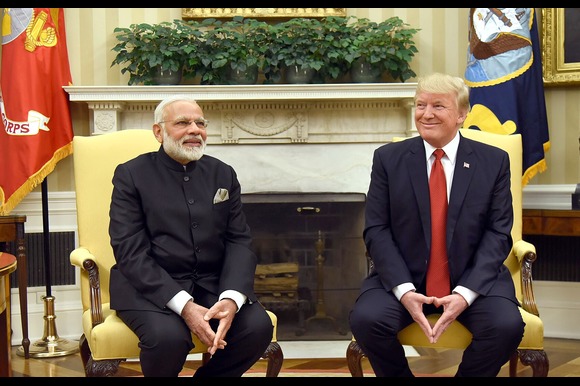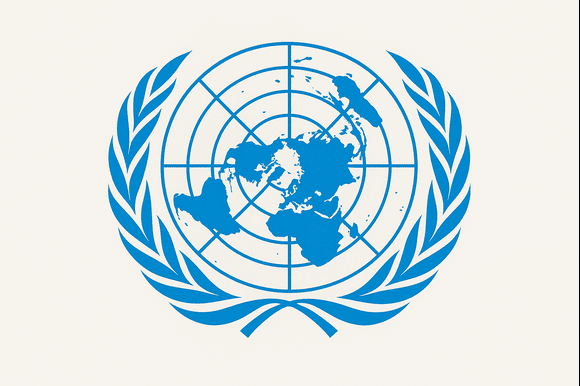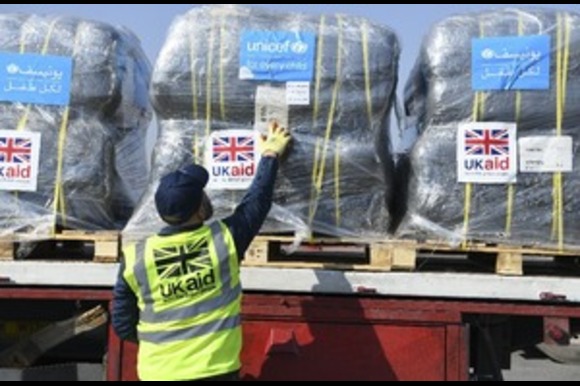
By Prime Minister's Office GODL-India,
The United States imposed 50% tariffs on Indian goods, a move framed as punishment for India’s continued purchase of Russian oil.
Then, on Wednesday, President Donald Trump claimed that Indian Prime Minister Narendra Modi had privately agreed to end those oil imports “within a short period of time.”
The following day, both Moscow and New Delhi issued carefully measured responses. Russia’s ambassador to India, Denis Alipov, said that Russian oil had been “very beneficial for the Indian economy and for the welfare of Indian people.” India’s government, meanwhile, stated that its energy import policy remained “guided by the interests of the Indian consumer in a volatile energy scenario,” and a spokesperson later clarified that they were “unaware of any conversation yesterday” between Modi and Trump.
Caught between a long-standing ally in Moscow and growing pressure from Washington, India’s energy strategy has become a complex balancing act. The question now is: how vital is Russian oil to India’s economy?
Last year alone, India — the world’s third-largest oil importer — purchased $52.7 billion worth of Russian crude, making up 37% of its total oil expenditure. Other key suppliers included Iraq, Saudi Arabia, the UAE, Nigeria, and the United States.
How India’s Oil Mix Evolved
Before Russia’s dominance in the market, India’s top ten crude suppliers in 2021–22 included Russia, Iraq, Saudi Arabia, the UAE, the US, Brazil, Kuwait, Mexico, Nigeria, and Oman. Beyond these, more than 30 smaller suppliers contributed to India’s diverse import basket through shifting, price-sensitive deals.
Despite the common perception that India is overly dependent on Russian oil, New Delhi continues to import significant volumes from the United States as well. In 2024, India bought $7.7 billion worth of American petroleum products — $4.8 billion of which was crude — but still ran a $3.2 billion petroleum trade deficit with Washington, according to the Global Trade Research Initiative (GTRI), a Delhi-based think tank.
From Sanctions to Surges
Between 2018–19 and 2021–22, India’s energy profile experienced its first major transformation. Imports from Iran and Venezuela — which once made up 17% of total crude imports or 41 million tonnes — were nearly eliminated due to sanctions, forcing India to turn to Iraq, Saudi Arabia, and the UAE.
The next major shift came after Russia’s invasion of Ukraine. India’s imports of Russian oil skyrocketed from just 4 million tonnes in 2021–22 to more than 87 million tonnes in 2024–25. The surge was driven by deep discounts offered by Moscow following Western sanctions, making Russian crude particularly attractive to Indian refiners.
During 2022–23, Russian oil was sold to India at an average 14.1% discount, and in 2023–24 the discount was around 10.4%. These price cuts saved India an estimated $5 billion annually — roughly 3–4% of its total crude import bill.
While the combined share of Gulf suppliers — Iraq, Saudi Arabia, and the UAE — fell by 11 percentage points, their export volumes to India remained largely unchanged. India’s overall imports rose from 196 million tonnes to 244 million tonnes, meaning the drop in share was primarily due to Russia’s expanded presence.
In contrast, imports from the US, Brazil, Kuwait, Mexico, Nigeria, and Oman more than halved. Many smaller suppliers also saw sharp declines, though a few — such as Angola, South Korea, and even a modest resurgence from Venezuela — bucked the trend.
Russia’s rise has effectively displaced many of India’s other suppliers,” said Partha Mukhopadhyay of the Centre for Policy Research, a Delhi-based think tank. “The increase in Russian oil has been matched by a steep reduction in imports from numerous countries.”
For India, the total savings from discounted Russian crude — while representing less than 1% of its $900 billion annual goods and services import bill — still amount to a significant $9 billion.
“If India were to abruptly stop buying from Russia, global oil prices could jump, erasing those savings and raising import costs worldwide,” Mr. Mukhopadhyay explained. “In a sense, India’s purchases of discounted Russian oil have not only cushioned its economy but also helped stabilize global prices.”
However, he added that current market trends may blunt that risk. Oil prices have already fallen 27% this year, from $78 to $59 per barrel — a level of volatility greater than what a suspension of Indian imports from Russia would likely cause. Weak global demand also means other producers could more easily make up for the roughly 4–5% of global production represented by India’s Russian imports.
The Refinery Equation
Ajay Srivastava, a former Indian trade official and founder of the GTRI, noted that Russian oil provides “both price stability and refinery compatibility” for India.
“Most Indian refineries are calibrated to process heavier crude grades, like Russia’s Urals blend,” he explained. “Switching to lighter US shale would require costly reconfiguration and reduce yields of critical fuels such as diesel and jet fuel.”
The Urals blend, a medium-to-heavy crude, allows India’s refineries to operate efficiently without significant technical adjustments — a key factor in the government’s reluctance to change suppliers.
Strategic Trade-Offs
For New Delhi, the choice is stark: continue buying discounted Russian oil and risk economic retaliation from Washington, or shift to more expensive Middle Eastern and American grades and face higher domestic fuel prices.
With US tariffs already straining trade relations and a long-delayed India-US trade agreement hanging in the balance, the decision carries both economic and diplomatic weight.
As Washington tightens pressure, India’s next move could define not just the future of its energy security, but also the trajectory of its strategic relationship with the United States.




